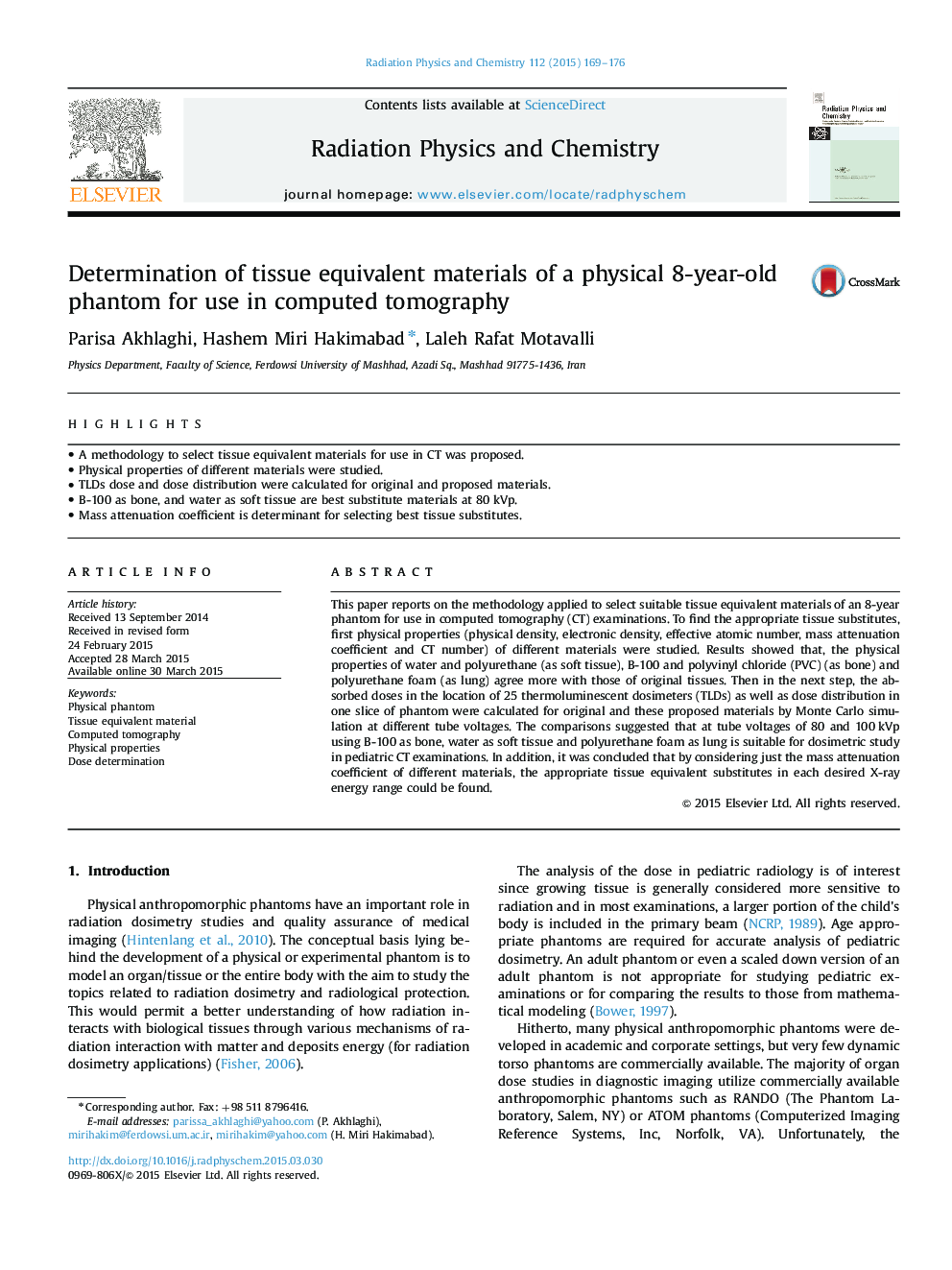| Article ID | Journal | Published Year | Pages | File Type |
|---|---|---|---|---|
| 1891119 | Radiation Physics and Chemistry | 2015 | 8 Pages |
•A methodology to select tissue equivalent materials for use in CT was proposed.•Physical properties of different materials were studied.•TLDs dose and dose distribution were calculated for original and proposed materials.•B-100 as bone, and water as soft tissue are best substitute materials at 80 kVp.•Mass attenuation coefficient is determinant for selecting best tissue substitutes.
This paper reports on the methodology applied to select suitable tissue equivalent materials of an 8-year phantom for use in computed tomography (CT) examinations. To find the appropriate tissue substitutes, first physical properties (physical density, electronic density, effective atomic number, mass attenuation coefficient and CT number) of different materials were studied. Results showed that, the physical properties of water and polyurethane (as soft tissue), B-100 and polyvinyl chloride (PVC) (as bone) and polyurethane foam (as lung) agree more with those of original tissues. Then in the next step, the absorbed doses in the location of 25 thermoluminescent dosimeters (TLDs) as well as dose distribution in one slice of phantom were calculated for original and these proposed materials by Monte Carlo simulation at different tube voltages. The comparisons suggested that at tube voltages of 80 and 100 kVp using B-100 as bone, water as soft tissue and polyurethane foam as lung is suitable for dosimetric study in pediatric CT examinations. In addition, it was concluded that by considering just the mass attenuation coefficient of different materials, the appropriate tissue equivalent substitutes in each desired X-ray energy range could be found.
